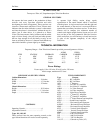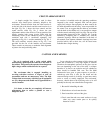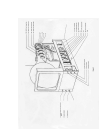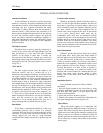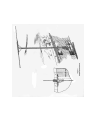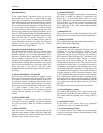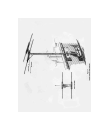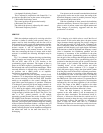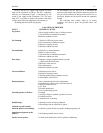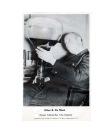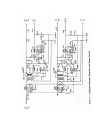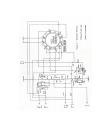
Du Mont 7
INSTALLATION OF RECEIVER
Antenna Installation
In the installation of television receivers the proper
antenna is a necessity. Successful installations will result
from attention to details, while slipshod and careless work
will bring only poor customer satisfaction and repeat
calls. There is nothing difficult about the installation of
television aerials, a little patience and experience is all
that is required. Regular broadcast aerials in the majority
of cases will be found useless. Impress this upon the
owner and make a satisfactory installation regardless of
what other equipment he already has. Satisfactory picture
reception is what both of you require for the completion
of the installation.
The Dipole Antenna
The Dipole form of aerial is generally satisfactory; it
consists of two metal rods, each approximately five feet
long and placed on a line with each other. Extreme
accuracy in the length of these rods is usually not
necessary and if the receiver is located very close to the
transmitting station it may be found advisable to cut down
the length of each rod. The simple dipole aerial is shown
in Fig. No, 3.
The Lead-In
The most popular lead-in from the dipole to the
Television receiver will be a twisted pair as it is
inexpensive and generally satisfactory in locations where
the. signal is strong. The length of this lead is usually not
of extreme importance, It is best to get the Dipole located
in the clear and as. far from electrical interference as
possible than to limit its location by using a theoretical
exact length feeder, The twisted pair should be soldered to
the lugs on the Dipole as a good connection is essential
and necessary since several changes in the position of the
antenna may be required for best results. The other form
of lead-in is the coaxial line such as the Amphenol No.
72. This form of feeder should be used in installations
where the length of the lead-in is too long for satisfactory
work with the twisted pair and again where the
installation is at an extreme distance and every bit of
energy picked up must be delivered to the receiver.
Polarization
If the dipole is mounted horizontally it is said to be
horizontally polarized, and if vertical it is vertically
polarized. Since the physical location materially effects
the aerial no specific form can he advised and we can
merely suggest that you start by using horizontal
polarization and change if necessary to produce the best
results.
Location of the Antenna
Whenever possible the Dipole should be erected so
that it is in line of sight with the transmitter. This does not
mean that no signals can be secured where a direct view
of the transmitter cannot be obtained. Surprising results
are often secured on these high frequencies and no
concise rules can be assigned to this work. If the location
is on a street, having heavy traffic there may be
considerable noise level due to automobile ignition
systems. In this case, locate the Dipole to the rear of the
building and away from the source of the noise as far as
possible. In the case of' electrical machinery over which
you have no control, the same method can be employed
along with the utilization of the directional effects of the
aerial which will be covered later.
Room Illumination
Whenever possible the receiver should be so placed
in the home that a direct glare from either natural or
artificial light does not fall upon the face of the cathode-
ray tube. The received picture may be viewed under a
variety of conditions where it is not always convenient to
darken the room completely. Adjustments made to meet
these conditions will not cause damage to the receiver.
Viewing the pictures in as dark a room as possible is
always at an advantage as it permits the setting of the
Intensity and Contrast controls in a manner that will give
picture tone values more correctly relating to those
actually used in the studio from which the picture is
transmitted.
Installation Process.
It is a good plan to proceed as follows with the
installation,
l. Erect the Dipole antenna in the clear. Start by using
horizontal polarization (mount the rods horizontal) and
turn them until their plane is at right angles with the
location of the transmitter
2. Adjust the receiver to produce a picture.
3. Return to the antenna and make final adjustments for
best signal strength and removal of ghosts, etc.
Ghost Effects
Where the picture appears to be duplicated and
slightly displaced, the additional picture is referred to as
a ghost. This effect is usually due to the refection of the
signals and can be cured by the slanting or rotating of the
Dipole or the use of a reflector or reflectors. If after all
possible positions have been tried, the ghost still exists it
will be necessary to change the location of the antenna
and try again.




